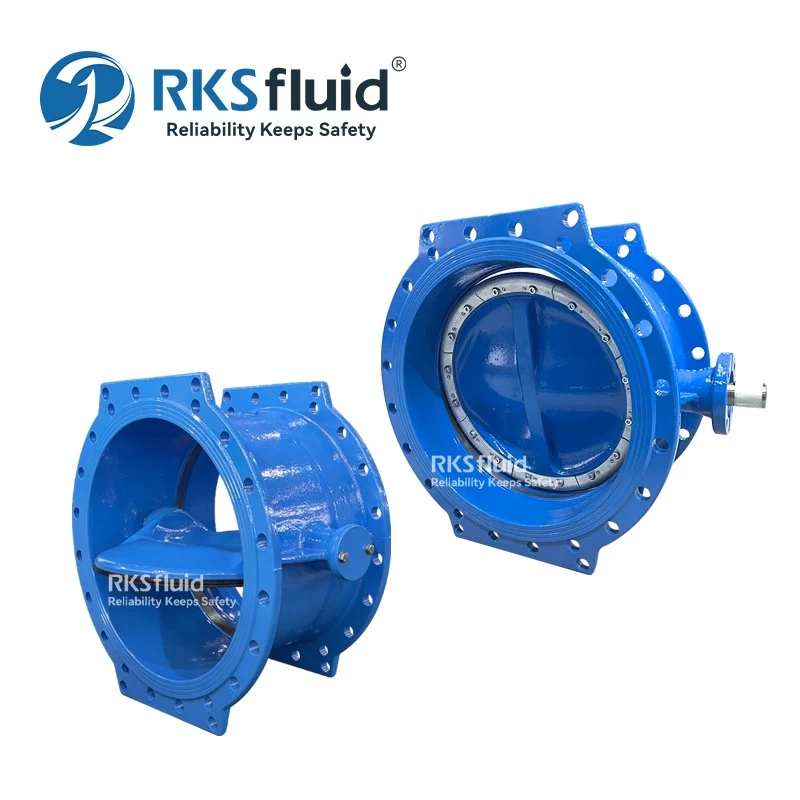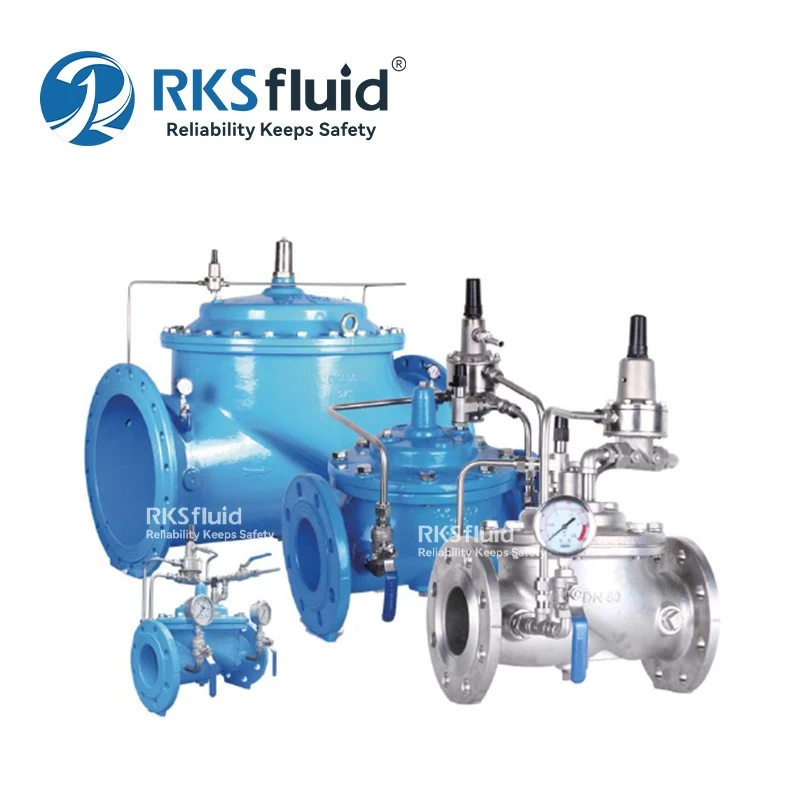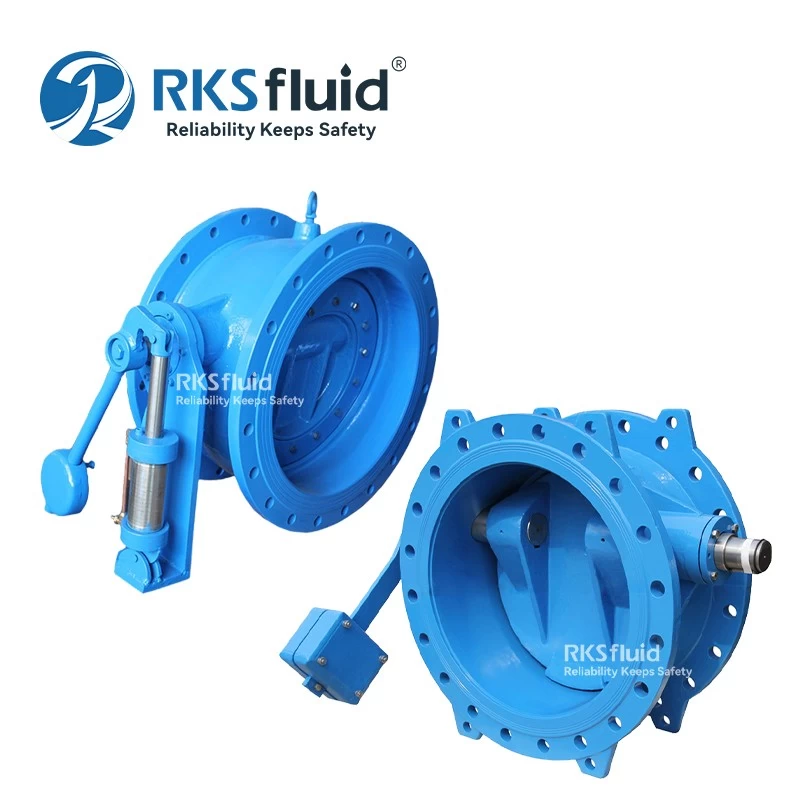- Main Product
- Contact Us
-
RKSfluid Flow Control Company
Web: www.rksfluid.com
Tel: +86 24 2318 0188
Fax: +86 24 2318 0788
Mail: info@rksfluid.com Contact Now
- Subscribe
-
Get email updates on new products
News
Pneumatic butterfly valve working principle and maintenance debugging methods

The pneumatic butterfly valve consists of a pneumatic actuator and a butterfly valve. The pneumatic butterfly valve is opened and closed by a circular disc rotating with the valve stem, so that the pneumatic valve that realizes the action is mainly used as a shut-off valve, and can also be designed to have the function of adjusting or stepping valve and adjusting. The butterfly valve is currently at a low pressure. More and more use on medium caliber pipes.
Pneumatic butterfly valve working principle
The butterfly valve's disc is mounted in the diameter direction of the pipe. In the cylindrical passage of the butterfly valve body, the disc-shaped disc rotates about the axis, the rotation angle is between 0°-90°, and when rotated to 90°, the valve is fully open. The butterfly valve is simple in structure, small in size and light in weight, and consists of only a few parts. Moreover, it can be quickly opened and closed by rotating 90°, and the operation is simple, and the valve has good fluid control characteristics. When the butterfly valve is in the fully open position, the thickness of the disc is the only resistance when the medium flows through the valve body, so the pressure drop generated by the valve is small, so it has better flow control characteristics. The butterfly valve has two sealing types: a spring seal and a metal seal. Elastomeric sealing valve, the sealing ring can be mounted on the valve body or attached to the periphery of the disc.
Pneumatic butterfly valve maintenance and commissioning
1. cylinder inspection and maintenance plan
Usually, the cylinder surface is cleaned and the cylinder shaft is refueled. The cylinder end cover is opened periodically every 6 months to check for any impurities and moisture in the cylinder, as well as grease status. If the grease is missing or has been dried, the cylinder should be disassembled for full maintenance and grease.
2. valve body inspection
Check the appearance of the valve body every 6 months, whether there is leakage on the mounting flange. If it is convenient to check whether the valve body seal is good, no wear, and whether the valve plate is flexible or not, the valve has no foreign matter stuck.
Cylinder block disassembly and assembly methods and precautions:
Firstly, remove the cylinder from the valve body, first disassemble the two ends of the cylinder. When removing the piston, pay attention to the direction of the piston rack. Then use an external force to rotate the cylinder shaft clockwise to make the piston run to the outermost position. Slowly ventilate the hole and gently push the piston out, but this method must pay attention to slow ventilation, otherwise the piston will suddenly squirt out, it is a little dangerous! Then remove the circlip on the cylinder shaft, the cylinder shaft can be from the other end take it out. Then you can clean each part and add grease. The parts to be greased are: cylinder inner wall and piston seal ring, rack and back ring, gear shaft and seal ring. After the grease is added, it must be installed in the order of the disassembly and the reverse order of the parts. It must be installed in the reverse order and in the reverse order. Be sure to pay attention to the position of the rack and pinion. Make sure that the piston is retracted when the valve is opened. In the innermost position, the upper end groove of the gear shaft is parallel with the cylinder block, and when the piston is extended to the outermost position when the valve is closed, the upper end groove of the gear shaft is perpendicular to the cylinder block.
Cylinder and valve body installation and debugging methods and precautions:
Firstly, the valve is placed in the closed state by external force. First, the valve is placed in the closed state by external force, that is, the valve shaft is rotated clockwise until the valve plate is in sealing contact with the valve seat, and the cylinder is also placed in the closed valve state (ie, the cylinder shaft is small above). The groove is perpendicular to the cylinder body for the valve that rotates clockwise to close the valve), then the cylinder is mounted on the valve (the installation direction is parallel or perpendicular to the valve body), and then the screw hole is aligned, there will be no Large deviation, if there is a slight deviation, turn the cylinder block a little, then tighten the screws. Pneumatic butterfly valve debugging first check whether the valve accessories are fully installed, solenoid valve and silencer, etc. If there is incomplete, no commissioning, the normal supply air pressure is 0.6MPA±0.05MPA, ensure that there is no debris in the valve body before the operation. At the first commissioning operation, the manual operation solenoid valve manual button is used (the solenoid valve coil is de-energized during manual operation, and the manual operation is effective; when the electronic control is operated, the manual twist is placed in the 0-position coil to lose power, and the manual operation is effective; In order to close the valve, 1 position is to open the valve, that is, to open the valve, if the power is off, if the valve is required to be closed, the power-off position is to close the valve and the solenoid valve coil can be rotated 180 degrees to install), and observe the valve operation. status.
If the pneumatic butterfly valve manufacturer is found to be slow at the start position of the valve during the commissioning operation, it will be very fast as soon as the action is taken. During the test run, it is found that the valve is slow at the start position of the valve opening, but it is very long after the action. Fast, this situation is that the valve is closed too tightly, just adjust the cylinder stroke to a small point (turn the stroke adjustment screw at both ends of the cylinder at the same time, adjust the screw to the open position, then turn off the gas source) Drop and adjust), adjust to the valve to open easily, shut it in place without leaking. If the muffler is adjustable muffler, the valve's switching speed can be adjusted. The muffler should be adjusted to the valve opening speed. If the adjustment is too small, the valve may not operate.











